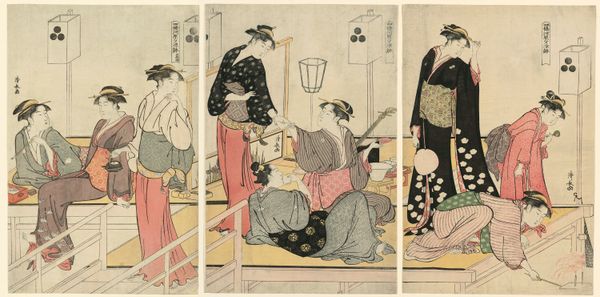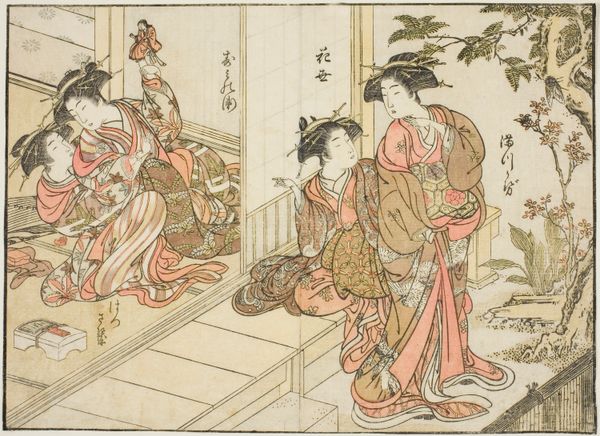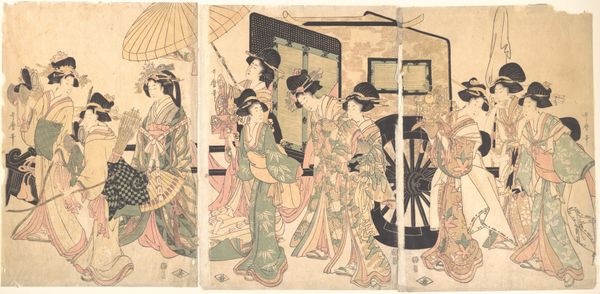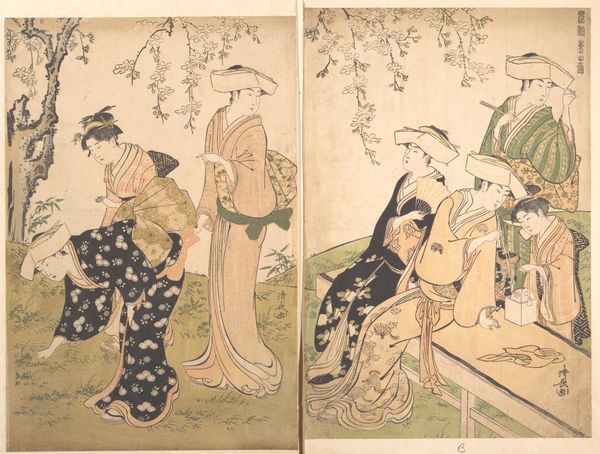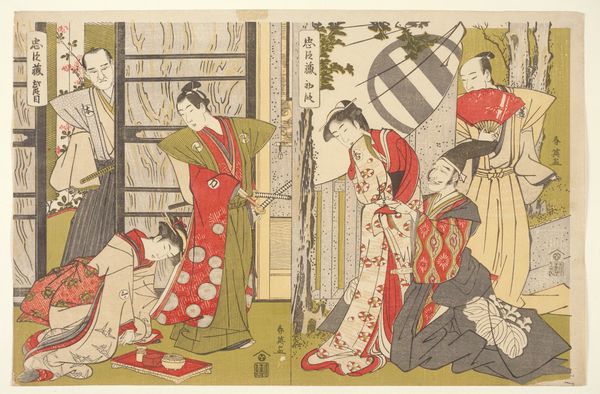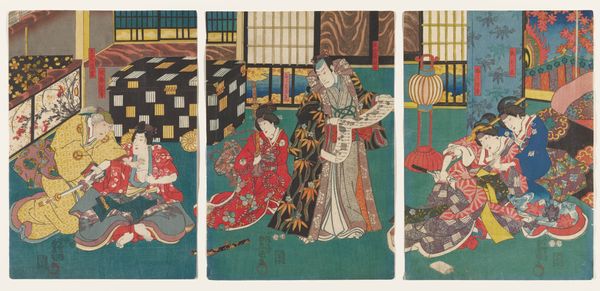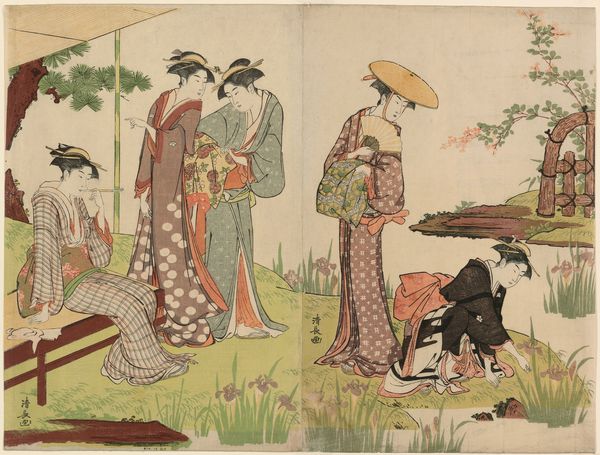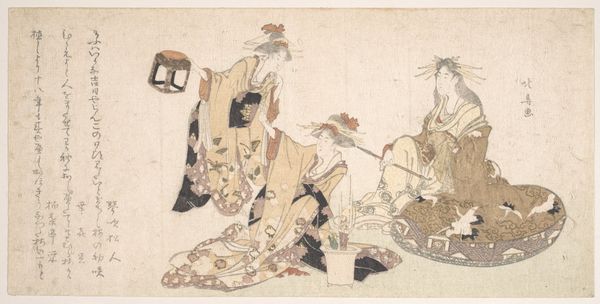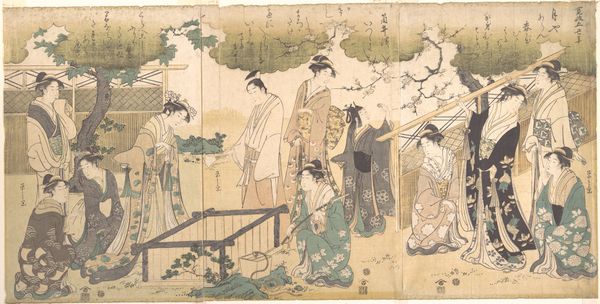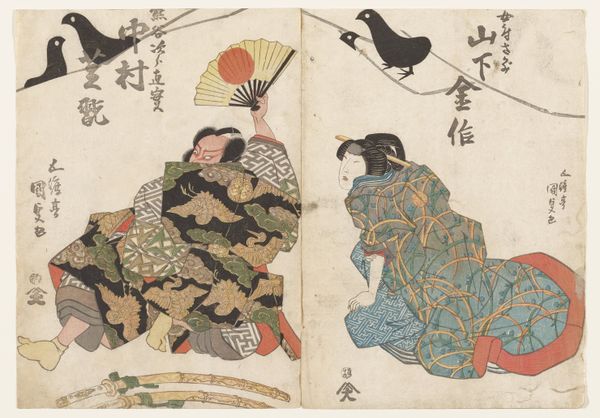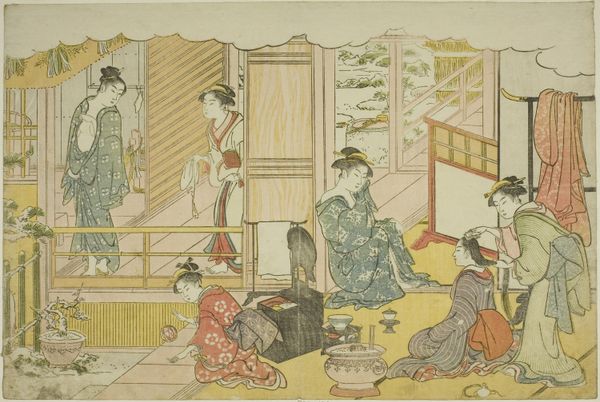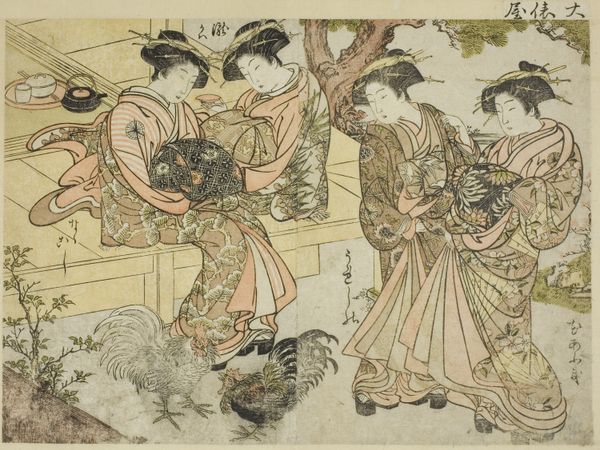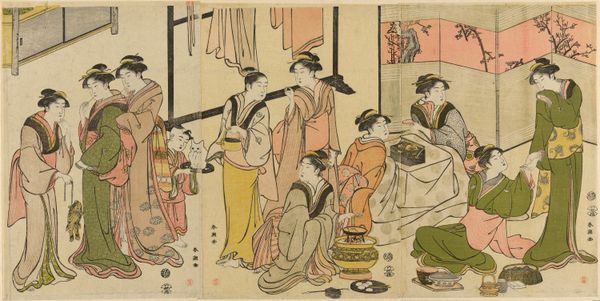
Women and an Infant Boy in a Public Bath House 1789 - 1809
0:00
0:00
# print
#
asian-art
#
ukiyo-e
#
genre-painting
Dimensions: Each sheet: 15 x 10 in. (38.1 x 25.4 cm)
Copyright: Public Domain
Curator: Welcome. We're here today with a print by Utagawa Toyokuni I, titled *Women and an Infant Boy in a Public Bath House*. It dates from sometime between 1789 and 1809. Editor: What immediately strikes me is how incredibly busy and active this space feels, despite the still nature of the print medium. Curator: Precisely. This work offers a fascinating window into the social fabric of late 18th to early 19th century Japan, exploring the daily lives of women and children in shared spaces. Ukiyo-e prints like these served as both entertainment and a form of social commentary. In terms of class, in that context, how did labor relate to leisure? Editor: Let’s not forget that Ukiyo-e prints were a booming commercial industry. These weren't rarefied art objects, but mass-produced images made using woodblocks. We see an array of textiles and patterns here - a real visual feast of kimono design and their material making. What were the labor implications behind their visuality? The print’s purpose speaks to mass culture consumption as a means of representation and exchange of cultural and aesthetic values of Japan. Curator: The choice to depict a public bath house also isn't accidental. These spaces occupied a unique position in society. They served not only as places for hygiene but also as vital hubs for socializing and communal life, especially for women, where hierarchies were renegotiated. These spaces challenged class, which were also patriarchal-dominated spaces. This begs to ask if class was truly being challenged or reshaped, even for a fleeting moment. What do you think? Editor: It is also interesting to consider what it would mean for the role and perception of women if men were absent. With shared domestic and care responsibilities removed in favor of self-directed intimacy. Curator: Indeed, this piece invites us to think about intersectional power dynamics during this era in Japan. Editor: By examining its materiality and production context, we can start to unpack those assumptions and appreciate the nuanced realities embedded in the visual experience of Japanese aesthetics. Curator: Thank you.
Comments
No comments
Be the first to comment and join the conversation on the ultimate creative platform.

